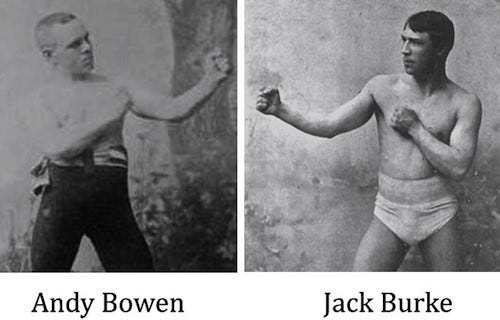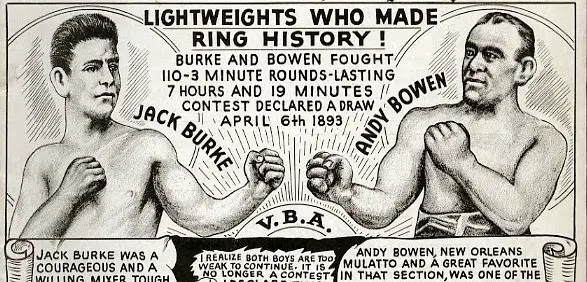 istory has definitely presented us with some incredible fights, be it in sporting events or even war, and from this, we are able to admire how amazing the human race really is. However, there are some events in which some determine people keep on fighting even after they have collapsed more than ten times. This motivation or desire to win is usually created by a reason or a person to fight for, however, this case was a bit different.
istory has definitely presented us with some incredible fights, be it in sporting events or even war, and from this, we are able to admire how amazing the human race really is. However, there are some events in which some determine people keep on fighting even after they have collapsed more than ten times. This motivation or desire to win is usually created by a reason or a person to fight for, however, this case was a bit different.
April the 6th, 1893, marks a date that has entered not only in history books but also in the Guinness World Records book as the day the longest boxing match took place. This match was between Andy Bowen and Jack Burke at the Olympic Club in New Orleans (Louisiana, USA). This was the final fight in a tournament to win the title of Lightweight Champion of the South.
What was more attractive to all the contenders was the large cash prize of $2,500. Today, that may not seem very much for a boxing championship, however, taking inflation into consideration, today we would be looking at $51,642, and back in 1893, this was a very big amount of cash. To give you an even better perspective, the average price of a medium-sized house at the time in America was around $3,000.
Determination from both contenders
The fight started at exactly 9 PM that day and lasted until the next day at 4 AM. Both fighters were described as very energetic and as possessing an “undefeatable” will to win the big prize. Everyone was amazed at the endurance both competitors showed even past the 20th round. In the 25th round, Bowen knocked Burke down, however, he was saved by the bell as the referee only counted to seven.

You could only imagine the bruises on each of the fighters. It was said that around round forty-five, both fighters had broken their hands, despite how good the gloves were, no boxing equipment was made to last for so long. During the fight, both boxers knocked the other one down several times, but they managed to get back up before the referee counted to ten.
At a certain point, due to the injuries both fighters suffered and their fatigue, talent and skill didn’t matter anymore, it was all about the will to fight. Most of the spectators fell asleep as it was already midnight and the match wasn’t even halfway over.
From round 105 no punches were even being thrown and by the 108th round, the two fighters were just circling each other. Those who witnessed this fight, and especially the referee, mentioned that there probably never existed two fighters so stubborn and determined to win.
By round 110, the referee, John Duffy, who had had enough, put both fighters and everyone else attending the match — which had already lasted more than seven hours — out of their misery and called the match a draw. Both fighters received the title of Lightweight Champions from the South and split the cash prize, each taking $1,250 home (better than nothing after so many bruises and broken bones).
The birth of boxing rules
The “Queensberry Rules” as they are known, which followed even to this day, were actually created by John Graham Chambers and published by Hohn Sholto Douglas (the ninth Marquess of Queensberry) in 1867, however, they were not yet respected by the world of boxing. These rules state that a boxing match cannot last longer than twelve rounds and that each round will last exactly three minutes and that between each round there’s a one-minute break.
The Broughton’s rules were put forward by Jack Broughton in 1743 in a desperate attempt to avoid death in the ring. This set of rules mainly included the famous “no hitting below the belt” rule as well as the ten seconds for a fighter to get back up from a knockdown, which at the time was actually thirty seconds.
Avid Writer with invaluable knowledge of Humanity!
Upcoming historian with over 30 million views online.
“You make your own life.”





